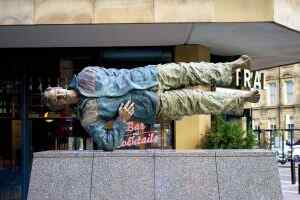Amil and the After: Navigating Complex Emotional Truths in Children’s Literature
Introduction: Resilience and Beyond
In times of adversity, we often hear the term “resilience” thrown around, emphasizing the ability to bounce back from failures, disappointments, and loss. As parents, we naturally want our children to develop resilience skills, equipping them to face life’s challenges with strength and adaptability. However, what happens when we encounter situations that go beyond the realm of common hardship? Can we still talk about resilience in the face of historical trauma, collective grief, and pandemics?
This is the question that award-winning author Veera Hiranandani grapples with in her upcoming children’s novel, “Amil and the After.” Set in post-partition Bombay (Mumbai) in 1948, the story delves into the aftermath of the Partition of India, exploring the emotional toll of surviving a deeply traumatic experience.
Historical Context and Personal Connection
The Partition of India in 1947 was a tumultuous event that resulted in widespread violence, displacement, and loss of life. Hiranandani’s own family experienced the horrors of partition firsthand, as refugees and survivors. Their emotional journey during this time left a profound impact on her, inspiring the development of “Amil and the After.”
The COVID-19 pandemic, with its isolation, fear, and collective trauma, also influenced the story’s themes. Hiranandani saw parallels between the historical trauma of partition and the collective trauma of the pandemic, both leaving deep emotional scars that needed to be addressed.
Thematic Exploration in “Amil and the After”
“Amil and the After” delves into complex emotional truths, challenging the simplistic notion of resilience as merely bouncing back. Through the experiences of Amil and Nisha, two young protagonists, the story explores the resilience and vulnerability of individuals in the aftermath of trauma.
The novel acknowledges the emotional toll of post-traumatic stress, the delicate balance between gratitude for survival and the lingering feelings of loss and longing. It encourages children to express a full range of emotions, normalizing the mix of joy, sadness, anger, fear, and vulnerability that make up a healthy emotional life.
Historical Trauma and Its Impact
Historically, resilience-focused messages in children’s literature have often emphasized moving forward and leaving bad things behind, promoting a practical and steady approach to life. While this can be helpful, it can also leave unexpressed emotional weight behind.
“Amil and the After” challenges this approach, creating a space for children to acknowledge the messiness of their emotions. It provides a safe space for emotional expression, fostering a sense of understanding and connection.
About the Author: Veera Hiranandani
Veera Hiranandani is an acclaimed author of children’s books, with an MFA in Creative Writing from Sarah Lawrence College. Her previous works have garnered numerous awards and accolades. She also teaches writing for children and young adults, sharing her passion for storytelling with aspiring writers.
“Amil and the After”: Book Details
“Amil and the After” is a poignant and heartwarming story of Amil’s journey in post-partition India, finding joy after tragedy. It is a companion to Hiranandani’s acclaimed novel, “The Night Diary.”
Published by Penguin Young Readers Group on January 23, 2024, the book is intended for readers aged 8-12.
Conclusion: The Power of Storytelling
“Amil and the After” is a powerful reminder of the importance of addressing complex emotional truths in children’s literature. It challenges the simplistic notion of resilience, promoting a more nuanced understanding of the human experience. Through its relatable characters and immersive storytelling, the novel encourages empathy, compassion, and a deeper understanding of the world around us.
By acknowledging the full range of human emotions, we can help children develop a healthier emotional life, equipping them with the tools to navigate the complexities of the world they live in.





